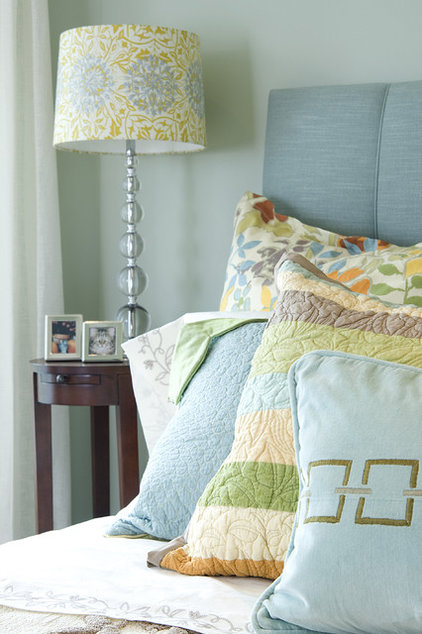How to Choose the Perfect Bed Pillow — and Sleep Better
If you like to feel cradled, you might choose a malleable goose down or feather filling. These materials retain warmth and help to keep you toasty on cold nights. On good-quality versions, look for an indicator called fill power, which refers to how much filling the pillow has (the more filling, the plumper and longer lasting the pillow will be).
One advantage to down: It lacks the sharp ends of feathers, which can poke through the pillowcase and prickle your skin. Allergy sufferers who want the comfort of down or feathers can buy special hypoallergenic pillow covers to alleviate reactions.
|
Springy memory foam
molds itself to your head, returning to its original shape after you
arise. Because it conforms to your movements in the night, it can be a
good choice for restless sleepers. It also works well for those with
neck and spinal problems, as it distributes weight evenly. The downside?
It tends to be expensive.
Polyester filling, less expensive than down and memory foam, tends to provide good support and hold its shape reasonably well. However, it is also the least durable of these materials. There are more specialized and natural options too; you also buy pillows with specialized fillings such as buckwheat hulls, which shift along with your position, and natural and organic latex, which are breathable and resist mold, mildew and mites. |
However, that doesn't mean you have to play by the rules — an oversize pillow can feel enveloping and cozy on a smaller bed. If you like to prop yourself against a pile of pillows for reading, buy smaller-size ones that you can layer. Even on a king-size bed, a standard pillow may be what you want to sleep on.
Select the right softness. Whether you choose down, synthetic or another filling, the way it's packed in makes a difference in how the pillow feels. A filling that's stuffed tightly into the cover makes for a firmer pillow; conversely, less filling means a looser, softer feel. Many mattress showrooms allow you to try them out before you buy.
Take special needs into account. You'll find plenty of specialty pillows on the market tailored to specific situations. For example, people with allergies might think about a pillow with a cover and filling that are specifically formulated to keep away dust and mites. If you snore, consider a pillow shaped to position your head and neck in a way that will prevent your airway from becoming compressed.



